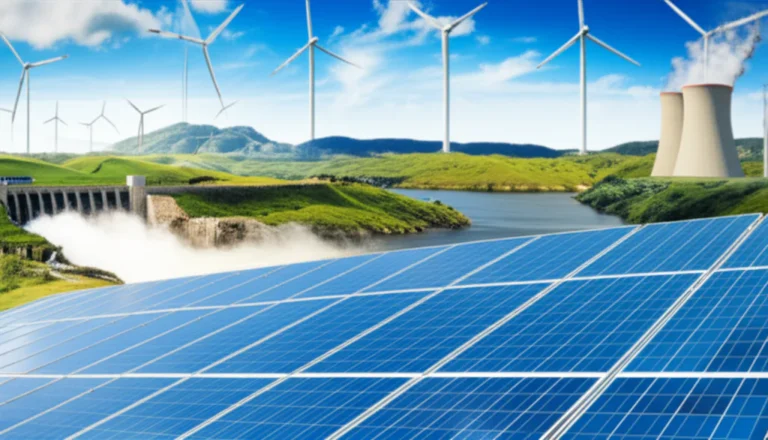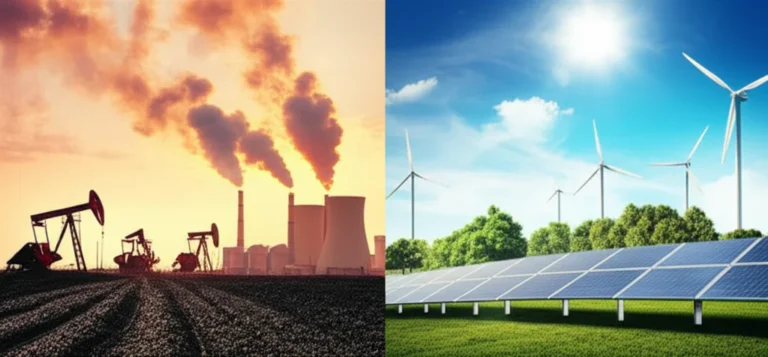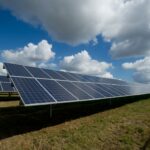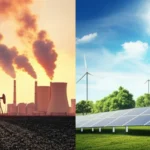Support our educational content for free when you purchase through links on our site. Learn more
⚡️ Renewable Energy Uncovered: 15 Game-Changing Facts & Innovations (2025)
Imagine a world where your home runs on sunlight, the wind powers your commute, and clean energy flows seamlessly from nature to your fingertips. Sounds like sci-fi? Not anymore! Renewable energy is not just transforming how we power our lives — it’s reshaping economies, fighting climate change, and even improving our health. Did you know that solar panel prices have dropped by over 80% since 2010, making green energy more affordable than ever? Or that global renewable capacity is set to triple by 2030 thanks to breakthroughs like green hydrogen and floating solar?
In this comprehensive guide, we peel back the layers of renewable energy — from its ancient roots to cutting-edge innovations, the policies driving its growth, and practical tips to harness it yourself. Whether you’re a curious newbie or a green energy enthusiast, we’ll equip you with the knowledge and inspiration to join the clean energy revolution. Ready to discover how renewables can power a healthier you and a healthier planet? Let’s dive in!
Key Takeaways
- Renewable energy sources like solar, wind, hydro, and geothermal are rapidly growing, now supplying over 30% of global electricity.
- Technological innovations such as green hydrogen, agrivoltaics, and advanced energy storage are unlocking new possibilities.
- Transitioning to renewables reduces carbon emissions, air pollution, and health risks, while creating millions of jobs worldwide.
- Policy frameworks and financial incentives play a crucial role in accelerating renewable adoption globally.
- You can start harnessing renewable energy at home today with solar panels, home batteries, and energy-efficient upgrades.
- Leading brands like SunPower, Tesla, Vestas, LG Chem, and RES Group offer reliable, sustainable solutions to power your green journey.
👉 Shop top renewable energy products:
Table of Contents
- ⚡️ Quick Tips and Facts
- 🌍 The Green Revolution: A Deep Dive into Renewable Energy History and Evolution
- 🔋 Renewable Energy 101: Understanding the Basics and Benefits
- 🌞 Mainstream Renewable Energy Technologies: Solar, Wind, Hydro, and More
- 🚀 Emerging Renewable Energy Innovations: The Future is Now
- 💰 Financing the Future: Investment, Incentives, and Economic Impact of Renewable Energy
- 📈 Market Trends and Industry Insights: Who’s Leading the Charge?
- ⚖️ Renewable Energy Policy and Regulation: Navigating the Green Maze
- 🌐 Social and Cultural Impact: How Renewable Energy is Changing Lives
- 🔥 Debates and Controversies: The Bright and Dark Sides of Renewable Energy
- 🔧 DIY and Practical Tips: How You Can Harness Renewable Energy at Home
- 📊 Comprehensive Comparison: Renewable Energy vs. Fossil Fuels
- 🌱 Environmental Benefits and Challenges: The True Impact of Going Green
- 🔍 Case Studies: Success Stories and Lessons Learned from Around the World
- 🔄 Integration and Storage: Tackling the Intermittency Puzzle
- 🛠️ Technology Spotlight: Top Brands and Products Leading the Renewable Energy Charge
- 📚 Recommended Links
- ❓ FAQ
- 📑 Reference Links
⚡️ Quick Tips and Facts
Welcome to the electrifying world of renewable energy! At Gone Greenish™, we’re all about keeping you healthy while keeping the planet happy 🌱. Before diving deep, here are some quick hits to get your green gears turning:
- Renewable energy comes from natural sources that replenish quickly — think sun, wind, water, and geothermal heat.
- It accounted for over 30% of global electricity generation in 2024, and that’s climbing fast! (IEA)
- Solar and wind are the fastest-growing stars, with solar PV capacity growing by over 170 GW in 2021 alone.
- Using renewables can reduce air pollution, potentially saving trillions in global health costs.
- Intermittency (when the sun isn’t shining or the wind isn’t blowing) is a challenge, but energy storage and smart grids are leveling up to solve it.
- Did you know? The average solar panel price has dropped by about 82% since 2010, making green energy more affordable than ever.
- Transitioning to renewables is a key part of fighting climate change and reducing your carbon footprint. (Check out our Carbon Footprint Reduction tips for more!)
We’ll unpack all this and more — from tech to policy, culture to finance — so stick around. Ready to get your green on? Let’s roll! 🌞🌬️💧
🌍 The Green Revolution: A Deep Dive into Renewable Energy History and Evolution

Renewable energy isn’t just a trendy buzzword — it’s a saga stretching back thousands of years. At Gone Greenish™, we love tracing the roots of today’s tech to ancient wisdom.
Ancient Origins and Early Innovations
- Windmills: The earliest verified windmills appeared in Persia (modern-day Iran) between 700-900 CE, used for grinding grain and pumping water.
- Water Mills: Ancient China and Persia harnessed flowing water for mechanical power centuries ago.
- Solar Ovens and Passive Solar: Civilizations used solar heat for cooking and heating, a practice that’s seeing a modern revival.
Industrial Revolution to Modern Era
- The Industrial Revolution shifted energy reliance to coal and fossil fuels, but the 20th century saw a resurgence of interest in renewables, especially after the 1970s oil crises.
- The first utility-scale solar plant was built in 1982 in California by ARCO, marking a milestone for solar PV.
- Wind power technology evolved from simple mills to modern turbines generating megawatts of power.
The 21st Century Boom
- Global renewable capacity has exploded — from niche to mainstream, renewables now supply over a quarter of the world’s electricity.
- Governments worldwide are committing to net-zero emissions by 2050, making renewables the backbone of future energy systems.
- Innovations like floating solar, agrivoltaics, and green hydrogen are pushing boundaries.
Fun fact: The Mohammed bin Rashid Al Maktoum Solar Park in Dubai is one of the largest solar parks globally, showcasing how deserts can turn into green powerhouses!
🔋 Renewable Energy 101: Understanding the Basics and Benefits
Let’s break down the essentials — what is renewable energy, why it matters, and how it benefits you and the planet.
What Is Renewable Energy?
Simply put, it’s energy derived from natural processes that replenish faster than we consume them. Unlike fossil fuels, renewables don’t run out on human timescales.
Key Benefits
- Environmental: Dramatically lower greenhouse gas emissions and air pollution.
- Health: Cleaner air means fewer respiratory illnesses and lower healthcare costs.
- Economic: Job creation in solar, wind, and other sectors is booming (over 12 million jobs globally).
- Energy Security: Reduces dependence on imported fuels and volatile markets.
- Sustainability: Supports a livable planet for future generations.
Common Applications
- Electricity generation
- Heating and cooling (think solar water heaters and heat pumps)
- Transportation (electric vehicles, biofuels)
- Off-grid power for rural areas
Quick Stats Table
| Aspect | Fact/Stat | Source |
|---|---|---|
| Global renewable share | >30% of electricity generation (2024) | IEA |
| Solar PV growth | 170 GW new capacity added in 2021 | IRENA |
| Job creation | 12 million jobs worldwide | IRENA |
| Cost decline | Solar panel prices down ~82% since 2010 | IRENA |
| Health savings | Trillions in potential global healthcare savings | WHO |
🌞 Mainstream Renewable Energy Technologies: Solar, Wind, Hydro, and More
Ready to geek out on the tech that’s powering our green future? Here’s the lowdown on the big players.
1. Solar Energy
Types:
- Photovoltaic (PV): Converts sunlight directly into electricity using semiconductors.
- Solar Thermal: Uses mirrors or lenses to concentrate sunlight to heat water or generate steam.
Pros:
- Scalable from rooftop panels to massive solar farms.
- Low maintenance and rapidly dropping costs.
- Can be integrated into buildings (solar shingles, windows).
Cons:
- Performance depends on weather and daylight hours.
- Requires space, though innovations like floatovoltaics reduce land use.
Popular Brands:
- SunPower: Known for high-efficiency panels.
- LG Solar: Durable panels with strong warranties.
- Tesla Solar Roof: Stylish solar integration into roofing.
2. Wind Power
Types:
- Onshore Wind: Land-based turbines, widely deployed.
- Offshore Wind: Turbines located in bodies of water, harnessing stronger winds.
Pros:
- High energy output, especially offshore.
- Mature technology with declining costs.
Cons:
- Intermittent and site-dependent.
- Concerns about noise and wildlife impact.
Leading Companies:
- Vestas: Global wind turbine leader.
- Siemens Gamesa: Strong offshore wind portfolio.
- GE Renewable Energy: Diverse wind solutions.
3. Hydropower
Types:
- Large dams (Three Gorges Dam)
- Small hydro and run-of-river systems
- Pumped-storage for energy storage
Pros:
- High efficiency (~90%).
- Provides dispatchable power to balance grids.
Cons:
- Environmental and social impacts from damming rivers.
- High upfront costs and long development times.
4. Bioenergy
- Derived from organic materials like wood, crops, and waste.
- Used for electricity, heating, and transportation fuels (bioethanol, biodiesel).
Pros:
- Can use existing infrastructure.
- Provides baseload power.
Cons:
- Sustainability concerns if forests are cleared.
- Still emits CO2, though less than fossil fuels.
5. Geothermal Energy
- Uses heat from Earth’s crust for electricity and heating.
- Best in tectonically active regions.
Pros:
- Reliable and continuous power.
- Small land footprint.
Cons:
- Location-specific.
- High upfront drilling costs.
🚀 Emerging Renewable Energy Innovations: The Future is Now
Hold onto your hats — the renewable energy frontier is bursting with cool innovations!
Green Hydrogen
- Produced by splitting water using renewable electricity.
- Promises to decarbonize heavy industry and long-haul transport.
- Projects like NEOM Green Hydrogen in Saudi Arabia are blazing trails.
Floating Solar (Floatovoltaics)
- Solar panels on lakes and reservoirs.
- Benefits: saves land, reduces water evaporation, and can increase panel efficiency.
Agrivoltaics
- Dual use of land for crops and solar panels.
- Can improve crop yields by providing shade and reducing heat stress.
- Requires careful crop selection (shade-tolerant plants like pineapple sage).
Enhanced Geothermal Systems (EGS)
- Drilling deep to fracture rock and access heat anywhere.
- Could unlock geothermal potential globally.
Marine Energy
- Harnessing waves, tides, and ocean currents.
- Still in early stages but promising for coastal regions.
Artificial Photosynthesis
- Using nanotech to mimic plants and store solar energy chemically.
- Could revolutionize clean fuel production.
💰 Financing the Future: Investment, Incentives, and Economic Impact of Renewable Energy
Money talks — and it’s shouting green! Here’s how the dollars flow in the renewable revolution.
Investment Trends
- Global renewable energy investments hit nearly $500 billion in 2022, up 16% from 2021. (BloombergNEF)
- Solar and wind dominate, accounting for over 90% of new capacity investments.
- Developing countries are increasingly leading investments, leveraging abundant resources and reducing fossil fuel dependence.
Incentives and Policies
- Feed-in tariffs, tax credits, and subsidies have accelerated adoption worldwide.
- The EU aims for 40% renewable electricity by 2030, backed by strong policy frameworks.
- The US Inflation Reduction Act includes historic clean energy incentives.
Economic Benefits
- Renewable energy creates more jobs per dollar invested than fossil fuels.
- Capacity additions since 2000 have reduced electricity bills by over $520 billion globally.
- Clean energy sectors employed 35 million people worldwide by 2022.
Challenges
- Fossil fuel subsidies still dwarf renewable incentives in many regions.
- Financing infrastructure and grid upgrades requires coordinated public-private efforts.
📈 Market Trends and Industry Insights: Who’s Leading the Charge?
The renewable energy market is a dynamic beast — here’s the scoop on who’s winning and why.
Global Leaders
| Country | Installed Capacity (GW) | Growth Rate (2014-2023) | Key Strengths |
|---|---|---|---|
| China | 1419 | 25% | Massive solar & wind build |
| United States | 400+ | 15% | Innovation & policy support |
| European Union | 500+ | 10% | Strong regulation & finance |
Corporate Titans
- NextEra Energy: Largest renewable energy generator in the US.
- Iberdrola: Spanish giant with a global footprint.
- RES Group: 40+ years of clean energy development, including wind, solar, and green hydrogen. (RES Group)
Consumer Trends
- Increasing adoption of rooftop solar and home battery systems (Tesla Powerwall, LG Chem).
- Growing interest in community solar projects and green tariffs.
⚖️ Renewable Energy Policy and Regulation: Navigating the Green Maze
Policies shape the renewable landscape. Let’s decode the green maze.
Key Policy Instruments
- Renewable Portfolio Standards (RPS): Mandate utilities to source a percentage of power from renewables.
- Feed-in Tariffs: Guarantee fixed prices for renewable energy producers.
- Tax Incentives: Credits and deductions for renewable installations.
- Carbon Pricing: Taxes or cap-and-trade systems to penalize emissions.
International Commitments
- The Paris Agreement pushes countries toward net-zero emissions by 2050.
- The 2023 UN Climate Change Conference saw commitments to triple renewable capacity by 2030.
Challenges
- Balancing grid stability with high renewable penetration.
- Overcoming local opposition due to land use, aesthetics, or wildlife concerns.
- Ensuring equitable access and avoiding energy poverty.
🌐 Social and Cultural Impact: How Renewable Energy is Changing Lives
Renewables aren’t just tech — they’re transforming societies.
Empowering Communities
- Off-grid solar electrification is improving education, health, and economic opportunities in rural areas.
- Community-owned wind and solar projects foster local engagement and benefits.
Changing Lifestyles
- Electric vehicles and home solar systems are reshaping energy consumption habits.
- Awareness of carbon footprints is driving consumer choices and activism.
Cultural Shifts
- Renewables symbolize hope and innovation in the fight against climate change.
- Art, media, and education increasingly feature green themes, inspiring new generations.
🔥 Debates and Controversies: The Bright and Dark Sides of Renewable Energy
No story is complete without a little drama! Let’s explore the hot debates.
Intermittency and Reliability
- Critics argue renewables can’t provide consistent power without fossil fuel backups.
- Solutions include energy storage, grid interconnections, and demand response.
Environmental Concerns
- Large hydro dams can disrupt ecosystems and displace communities.
- Mining for critical minerals (lithium, cobalt) raises ethical and environmental issues.
- Wind turbines and solar farms may impact wildlife habitats if not carefully sited.
Economic Equity
- Who benefits from renewable projects? Are marginalized communities included or burdened?
- Energy justice advocates push for fair distribution of costs and benefits.
Nuclear Power Debate
- Some consider nuclear a low-carbon energy source; others argue about safety and waste.
- Renewable purists often exclude nuclear from the “renewable” category.
🔧 DIY and Practical Tips: How You Can Harness Renewable Energy at Home
Ready to bring the power of renewables to your doorstep? Here’s how to get started.
Step 1: Assess Your Energy Needs
- Review your electricity bills and usage patterns.
- Identify peak usage times and potential savings.
Step 2: Explore Solar Options
- Rooftop Solar Panels: Most common and effective.
- Solar Water Heaters: Great for reducing heating bills.
- Solar Chargers: For small devices and outdoor use.
Step 3: Consider Wind or Micro-Hydro (if location permits)
- Small wind turbines can supplement power in windy areas.
- Micro-hydro systems work if you have flowing water nearby.
Step 4: Add Energy Storage
- Batteries like Tesla Powerwall or LG Chem RESU store excess energy for nighttime or outages.
Step 5: Improve Energy Efficiency
- Upgrade insulation, switch to LED lighting, and use smart thermostats.
Step 6: Investigate Incentives
- Check local and federal rebates or tax credits to reduce upfront costs.
Personal Anecdote
We installed a SunPower solar system last year and slashed our electricity bills by 60%! Plus, the satisfaction of powering our home with sunshine? Priceless. ☀️
📊 Comprehensive Comparison: Renewable Energy vs. Fossil Fuels
Let’s put renewables and fossil fuels head-to-head in the ultimate energy showdown.
| Aspect | Renewable Energy ✅ | Fossil Fuels ❌ |
|---|---|---|
| Carbon Emissions | Near zero (except some biomass) | High greenhouse gas emissions |
| Air Pollution | Minimal | Major contributor to smog and health issues |
| Resource Availability | Infinite (sun, wind, water) | Finite and depleting |
| Cost Trends | Decreasing rapidly | Volatile and generally increasing |
| Job Creation | High per dollar invested | Lower and declining |
| Energy Security | Local and distributed | Dependent on geopolitics and imports |
| Environmental Impact | Land use and mining concerns | Habitat destruction, spills, and pollution |
| Reliability | Intermittent but improving with storage | Consistent but finite |
🌱 Environmental Benefits and Challenges: The True Impact of Going Green
Going green isn’t just about cutting emissions — it’s a complex dance with nature.
Benefits
- Reduces carbon footprint and slows climate change.
- Improves air and water quality.
- Protects biodiversity by reducing fossil fuel extraction.
Challenges
- Land use conflicts for large solar and wind farms.
- Mining for batteries and turbines can harm ecosystems.
- End-of-life disposal and recycling of panels and batteries need improvement.
Strategic Solutions
- Careful siting and environmental assessments.
- Investing in recycling technologies (e.g., solar panel recycling).
- Supporting sustainable mining practices.
🔍 Case Studies: Success Stories and Lessons Learned from Around the World
Nothing beats real-world examples to inspire and inform.
Germany’s Energiewende
- Ambitious transition to renewables with strong policy support.
- Challenges with grid stability and coal phase-out, but massive growth in solar and wind.
Kenya’s Geothermal and Solar Push
- Olkaria geothermal plant powers thousands sustainably.
- Solar mini-grids electrify rural communities, boosting livelihoods.
China’s Solar Dominance
- World leader in solar manufacturing and installation.
- Massive projects like Tengger Desert Solar Park showcase scale.
Lessons Learned
- Policy consistency is key.
- Community engagement prevents opposition.
- Grid modernization is essential for integrating renewables.
🔄 Integration and Storage: Tackling the Intermittency Puzzle
How do we keep the lights on when the sun sleeps or the wind calms? Enter energy integration and storage.
Energy Storage Technologies
| Technology | Description | Pros | Cons |
|---|---|---|---|
| Pumped Hydro Storage | Uses excess electricity to pump water uphill | Mature, large capacity | Site-specific, costly |
| Lithium-Ion Batteries | Store electricity chemically | Scalable, fast response | Resource-intensive, lifespan |
| Flow Batteries | Electrochemical storage with liquid electrolytes | Long life, scalable | Complex, expensive |
| Green Hydrogen | Converts excess electricity to hydrogen for storage | Long-term, versatile fuel | Efficiency losses, infrastructure needed |
Grid Improvements
- Smart grids balance supply and demand dynamically.
- Demand response programs incentivize users to shift consumption.
- Overcapacity in solar and wind ensures supply during low production.
Sector Coupling
- Using renewables to power electric vehicles, industry (hydrogen), and buildings (thermal storage) increases flexibility.
🛠️ Technology Spotlight: Top Brands and Products Leading the Renewable Energy Charge
Let’s spotlight some real-world heroes powering the green transition.
| Brand | Specialty | Highlights | Where to Shop/Explore |
|---|---|---|---|
| SunPower | High-efficiency solar panels | Industry-leading panel efficiency (~22%) | Amazon | SunPower Official |
| Tesla | Solar Roof, Powerwall | Stylish solar integration + home battery | Tesla |
| Vestas | Wind turbines | Global leader in wind turbine manufacturing | Vestas Official |
| LG Chem | Energy storage batteries | Reliable home and commercial battery systems | Amazon | LG Official |
| RES Group | Clean energy project developer | 40+ years in wind, solar, hydrogen projects | RES Group |
Why We Recommend These
- Proven track records and innovation leadership.
- Strong warranties and customer support.
- Commitment to sustainability and ethical sourcing.
📚 Recommended Links
- How Many Trees 🌳 Does It Take to Offset Your Breath? (2025)
- Carbon Footprint Reduction
- Eco-Conscious Brands
- Green Home
- Climate Change
- Conservation Tips
❓ FAQ
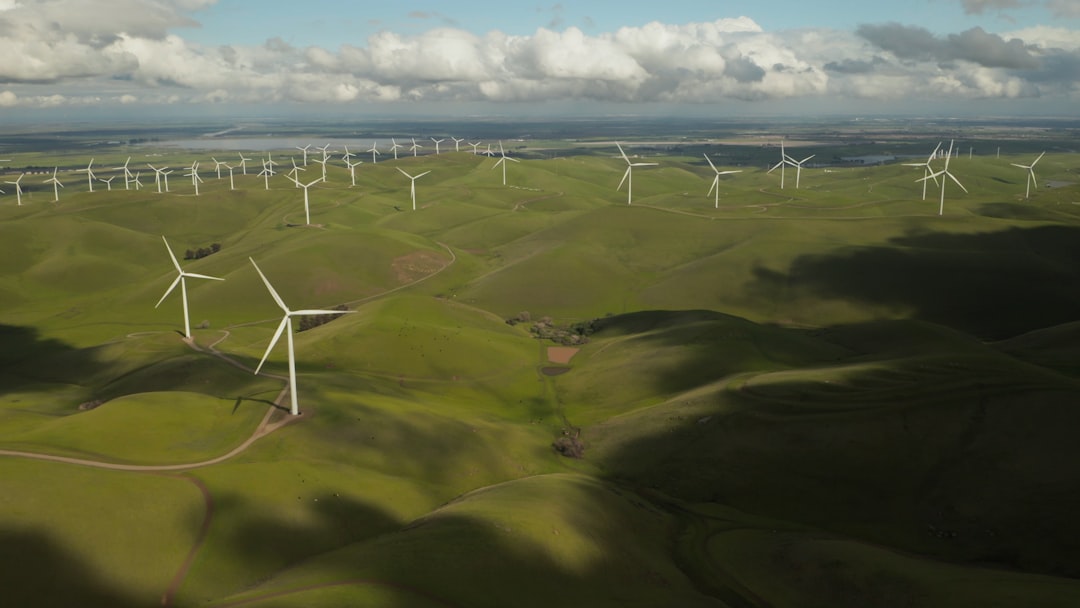
Q: Are renewable energy sources truly reliable?
A: Yes! While solar and wind are intermittent, advances in energy storage, grid management, and complementary technologies like hydropower and bioenergy ensure reliable power supply.
Q: Can I install solar panels if I live in a cloudy area?
A: Absolutely! Modern solar panels still generate electricity on cloudy days, though output is reduced. Plus, energy storage can help balance supply.
Q: What’s the difference between renewable and sustainable energy?
A: Renewable energy comes from sources that replenish naturally. Sustainable energy considers the broader environmental and social impacts, ensuring long-term viability.
Q: How can I support renewable energy without installing equipment?
A: You can choose green energy plans from your utility, invest in community solar projects, or support policies promoting renewables.
📑 Reference Links
- International Energy Agency (IEA) – Renewables 2023
- IRENA – Renewable Capacity Statistics 2023
- National Renewable Energy Laboratory (NREL)
- RES Group Official Website
- World Health Organization – Air Pollution and Health
- BloombergNEF – Clean Energy Investment
Ready to dive deeper or start your own renewable journey? We’ve got you covered every step of the way at Gone Greenish™! 🌿
Conclusion

Wow, what a journey through the vibrant world of renewable energy! From ancient windmills to cutting-edge green hydrogen projects, we’ve seen how renewable energy is not just a tech upgrade — it’s a transformative force reshaping our planet, economies, and health.
Here’s the bottom line: Renewable energy offers massive environmental and health benefits, slashes carbon footprints, creates millions of jobs, and powers a cleaner, more resilient future. Yes, challenges like intermittency and resource mining exist, but with smart policies, innovative storage solutions, and responsible planning, these hurdles are surmountable.
If you’re considering diving into renewables at home or in your community, brands like SunPower, Tesla, Vestas, LG Chem, and RES Group offer proven, reliable solutions that balance performance, sustainability, and innovation. Whether it’s rooftop solar, home batteries, or community wind projects, the technology is mature and accessible.
At Gone Greenish™, we confidently recommend embracing renewable energy as a cornerstone of a healthy you and a healthy planet. The sooner we all plug into this green revolution, the brighter (and cleaner!) our future will be. Ready to take the leap? Your journey starts now — and we’re here to guide you every step of the way. 🌞🌿
Recommended Links
Shop Top Renewable Energy Products and Brands
-
SunPower Solar Panels:
Amazon | SunPower Official Website -
Tesla Solar Roof & Powerwall:
Tesla Official Website -
Vestas Wind Turbines:
Vestas Official Website -
LG Chem Energy Storage Systems:
Amazon | LG Energy Official Website -
RES Group Clean Energy Solutions:
RES Group Official Website
Recommended Books on Renewable Energy
-
Renewable Energy: Power for a Sustainable Future by Godfrey Boyle
Amazon Link -
Sustainable Energy – Without the Hot Air by David JC MacKay
Amazon Link -
The Grid: The Fraying Wires Between Americans and Our Energy Future by Gretchen Bakke
Amazon Link
❓ FAQ

What are the benefits of renewable energy for the environment and human health?
Renewable energy significantly reduces greenhouse gas emissions, which are the primary drivers of climate change. By replacing fossil fuels, renewables cut down air pollutants like particulate matter, sulfur dioxide, and nitrogen oxides, which cause respiratory and cardiovascular diseases. Cleaner air leads to fewer hospital visits, lower healthcare costs, and improved overall public health. Additionally, renewables reduce water pollution and habitat destruction linked to fossil fuel extraction, preserving ecosystems vital for human well-being.
Read more about “Discover 10 Powerful Ways to Boost Nature Preservation 🌍”
How does renewable energy contribute to reducing air pollution and promoting clean air?
Burning fossil fuels releases harmful pollutants that degrade air quality. Renewable energy sources like solar, wind, and hydro generate electricity without combustion, thus producing near-zero air pollutants. This shift reduces smog, acid rain, and toxic emissions, improving air quality especially in urban and industrial regions. Cleaner air means fewer cases of asthma, lung cancer, and heart disease, benefiting vulnerable populations such as children and the elderly.
Can renewable energy sources like solar and wind power reduce the carbon footprint of households and communities?
Absolutely! Installing solar panels or participating in community wind projects allows households and neighborhoods to generate clean electricity, directly cutting their carbon emissions. For example, a typical residential solar system can offset several tons of CO2 annually — equivalent to planting dozens of trees. This localized generation also reduces transmission losses and dependence on fossil-fuel-powered grids, amplifying carbon savings.
What role does renewable energy play in mitigating climate change and its impacts on global health?
Renewable energy is central to limiting global warming to safe levels by drastically reducing carbon emissions. Mitigating climate change helps prevent extreme weather events, heatwaves, and vector-borne diseases that threaten global health. By stabilizing the climate, renewables protect food and water security, reduce displacement, and lower the burden on healthcare systems worldwide.
How can individuals and families incorporate renewable energy into their daily lives to promote sustainability and well-being?
- Install rooftop solar panels or solar water heaters to generate clean energy at home.
- Switch to green energy plans offered by utilities that source power from renewables.
- Use energy-efficient appliances and LED lighting to reduce consumption.
- Consider home battery storage to maximize renewable use and provide backup power.
- Support community solar or wind projects if direct installation isn’t feasible.
- Advocate for policies and incentives that promote renewable adoption locally.
What are the economic benefits of transitioning to renewable energy, and how can it create jobs and stimulate local economies?
Renewable energy investments generate more jobs per dollar than fossil fuels, spanning manufacturing, installation, maintenance, and R&D. These jobs often pay well and are distributed across urban and rural areas, boosting local economies. Renewables also reduce energy costs over time, freeing up household and business budgets. Moreover, energy independence reduces vulnerability to volatile fossil fuel prices, stabilizing economies.
How does renewable energy impact access to clean water and sanitation, and what are the health implications of this access?
Renewable-powered water pumps and treatment systems provide reliable, affordable access to clean water, especially in off-grid and rural areas. This access reduces waterborne diseases, improves hygiene, and supports sanitation infrastructure. Unlike fossil fuel-powered systems, renewables lower operational costs and environmental risks, making water services more sustainable and health-promoting.
What are some examples of successful renewable energy projects that have improved public health and environmental quality in various regions and countries?
- Kenya’s Olkaria Geothermal Plant provides clean, reliable power, reducing reliance on wood fuel and improving air quality.
- Germany’s Energiewende has accelerated renewables, cutting emissions and improving urban air quality.
- China’s Tengger Desert Solar Park powers millions sustainably, reducing coal dependence and associated pollution.
- Community solar projects in the US have increased energy access and lowered bills in underserved areas, improving quality of life.
📑 Reference Links
- International Energy Agency (IEA) – Renewables 2023
- IRENA – Renewable Capacity Statistics 2023
- National Renewable Energy Laboratory (NREL)
- RES Group | Global Renewable Energy Solutions
- World Health Organization – Air Pollution and Health
- BloombergNEF – Clean Energy Investment
- SunPower Official Website
- Tesla Solar Roof
- Vestas Official Website
- LG Energy Official Website
Thanks for joining us on this renewable energy adventure! Stay green, stay healthy, and keep powering a better tomorrow with Gone Greenish™. 🌿⚡

